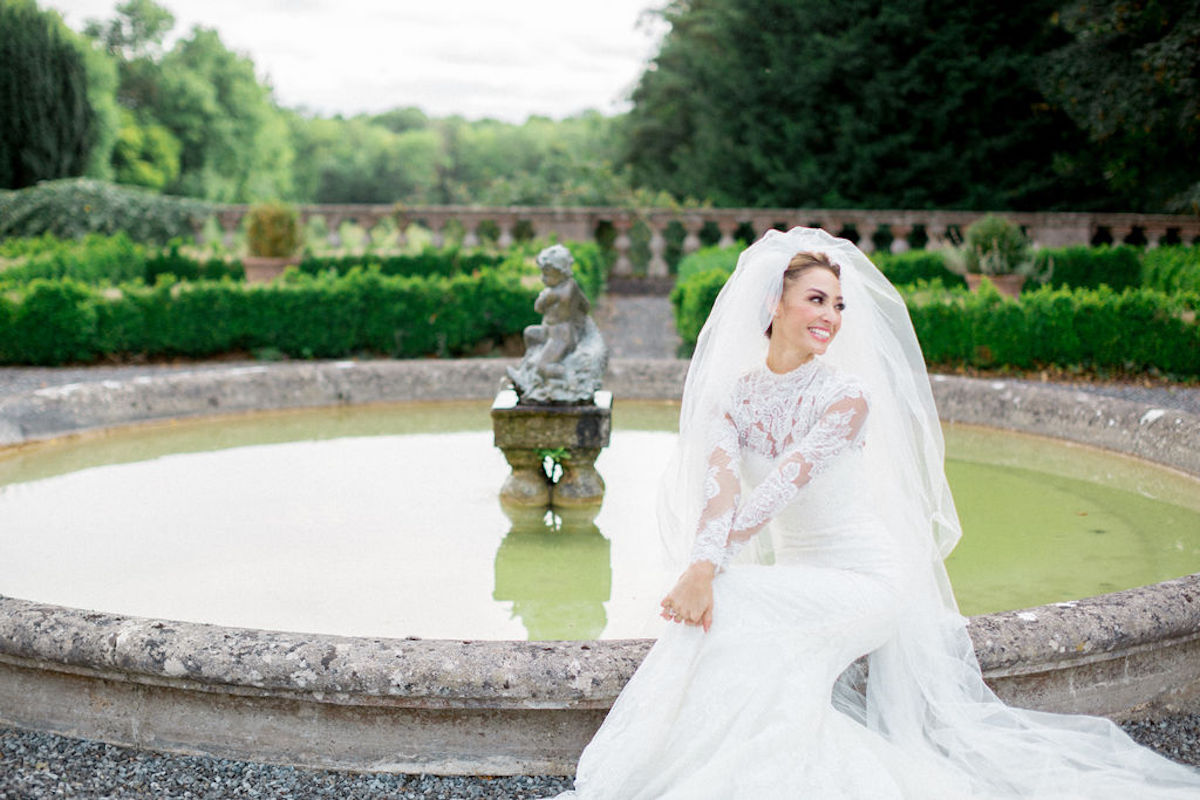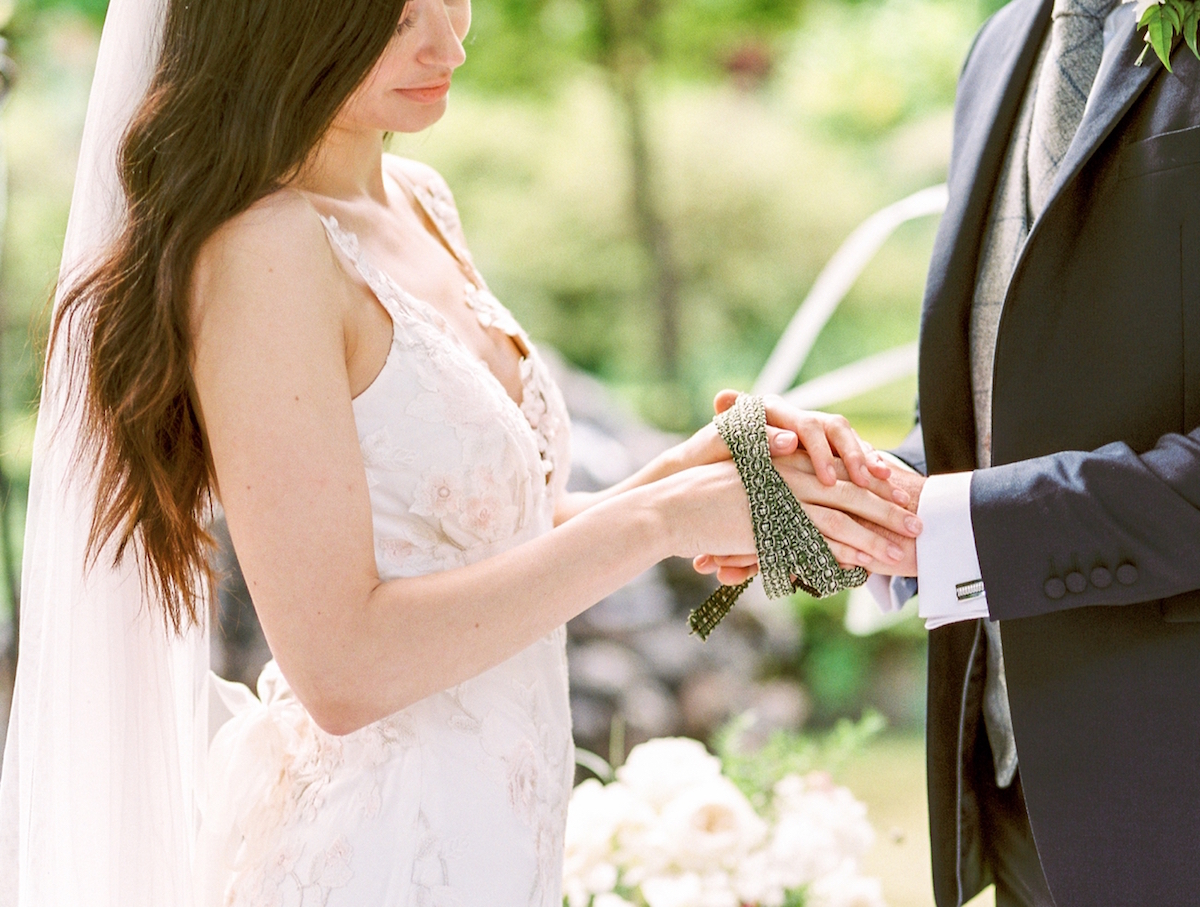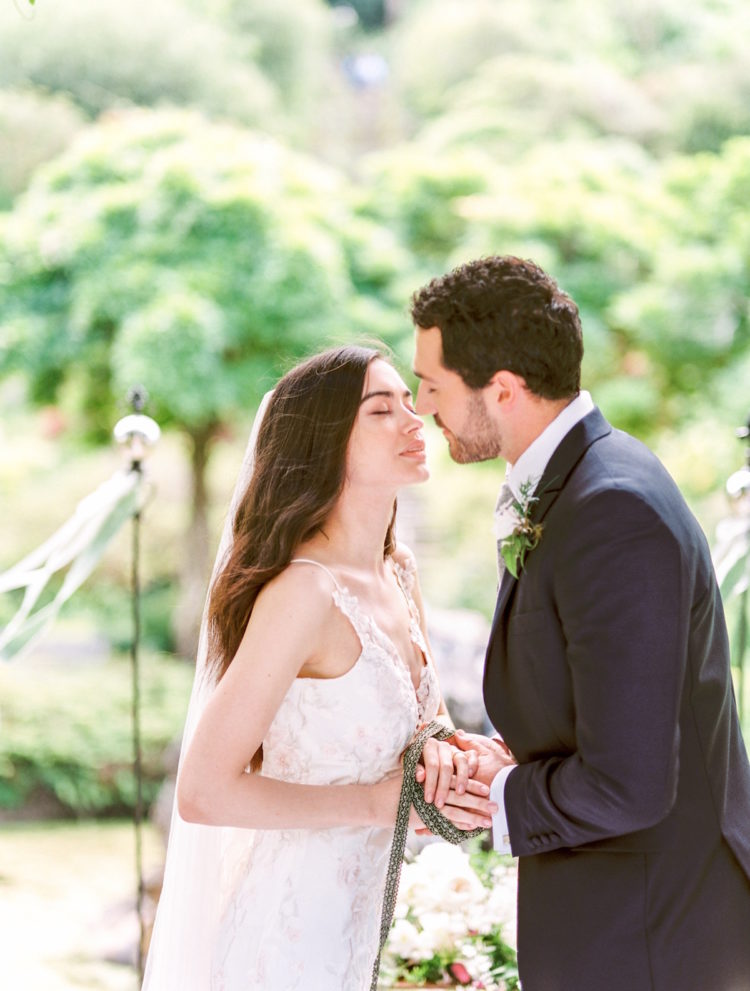Are you planning to wear an Irish lace wedding dress or veil? Whether you’re planning a destination wedding in Ireland, or want to include Irish lace as a link to your family’s heritage, you’ll be part of a rich cultural tradition with a fascinating history. In fact, the story of Irish lace is interwoven with the story of Ireland itself. Read on to learn more about this ancient craft, and how you can incorporate it into your big day.
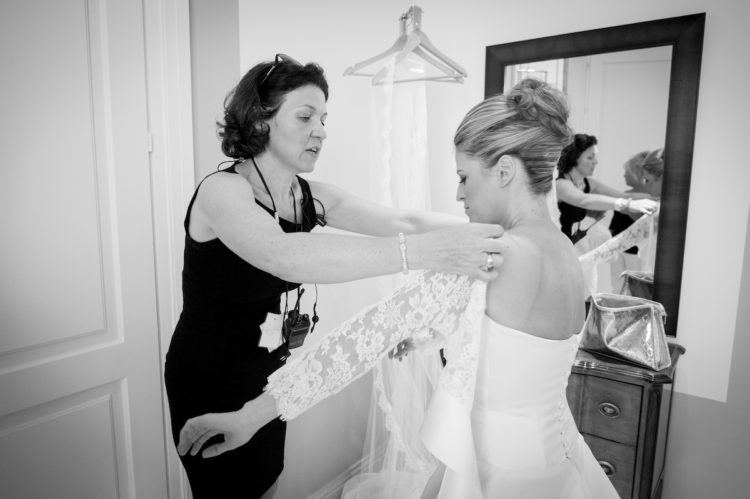
The history of Irish lace
Lace was first produced in Ireland in the 18th century. It was adapted from European needle lace, and brought to the island by Catholic nuns and wealthy Protestant philanthropist ladies. It became a means for poor women in remote parts of the country to support their families, since it required little equipment and cotton was cheap and easy to clean. By the time of the Great Famine, there were numerous lace-making schools, where lace making was taught to anyone willing to learn, and Irish lace became an important part of famine relief schemes. It became highly sought-after by fashion conscious ladies in Paris, Vienna, Brussels, London, and New York.
One of the features of Irish lace is that different parts of the country produce distinctive variations, each with different techniques. For example, Kenmare lace from County Kerry, Carrickmacross lace from County Monaghan, and Youghal lace from County Cork. The unique style of the lace was passed on from one generation to the next, and unique motifs were treasured family secrets. While some of these designs have unfortunately been lost, the skill of Irish lacemaking lives on. Irish lace wedding dresses are especially popular. The lace has also inspired many high-end designers, most recently the exquisite Alexander McQueen Spring/Summer 2020 collection.
Fit for a princess
Irish lace also has an important royal connection. Queen Victoria and Princess Alexandra were particularly fond of Youghal lace, and Queen Mary, wife of George V, ordered a lace train to wear on their visit to India. Since Queen Victoria popularised the white lace wedding gown, Irish lace (and Carrickmacross lace in particular) has been worn by a number of distinguished royal brides, including Princess Diana and Kate Middleton.
The Carrickmacross style is a combination of needlework and appliqué, with characteristic motifs including leaves, hearts, flowers, Celtic symbols, and small raised dots called ‘pops’. During the making of Kate Middleton’s dress, the lacemakers had to wash their hands every thirty minutes, and needles were changed every three. While time-consuming, it is this level of craftsmanship and creativity that makes an Irish lace wedding dress fit for royalty.
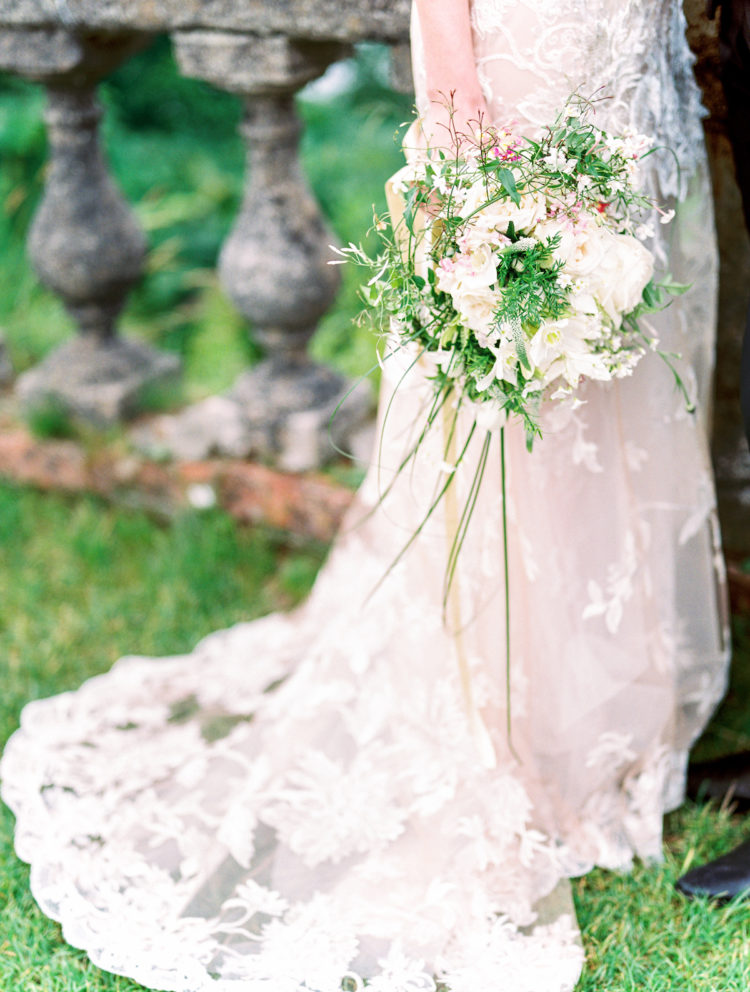
How to incorporate Irish lace into your wedding
But what if an Irish lace wedding dress or veil isn’t your style? You can still include Irish lace in your wedding. One tradition for Irish brides is to carry a lace handkerchief tucked into the sleeve of their dress or wrapped around their bouquet. The handkerchief is later used to make a christening bonnet for the couple’s first baby. Another idea is to wear a lace garter, You could even have an Irish lace motif worked into your wedding invitations, or reproduced on your wedding cake!
However you choose to incorporate it, Irish lace is sure to add a beautiful, traditional touch to your wedding day.
Slán go Fóill,
Tara
Images by Christina Brosnan, Fred Marigaux, Lisa O’Dwyer





